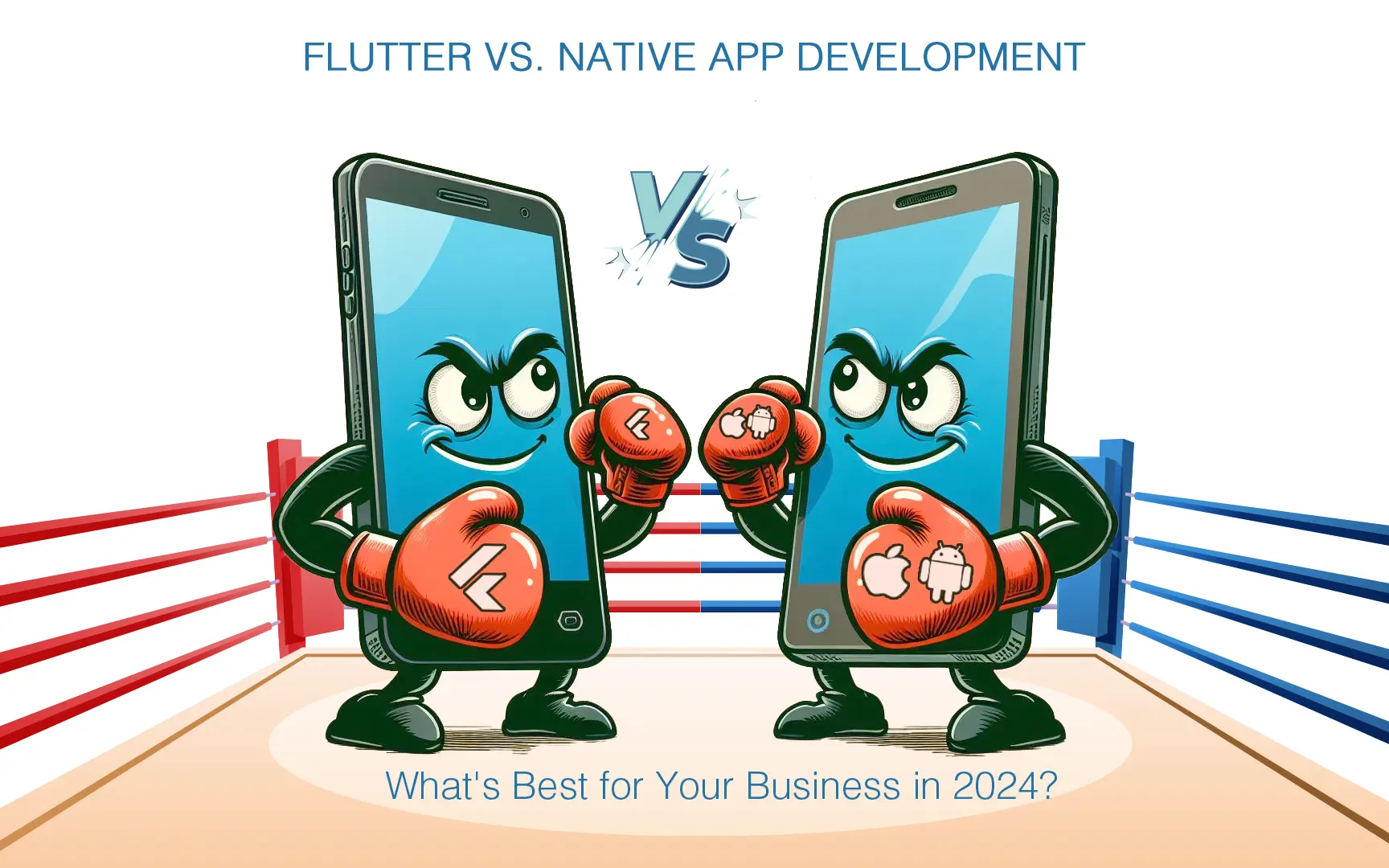As we live in 2024, businesses face a critical decision in mobile app development: opting for the flexibility of Flutter or the specificity of native app development. This article compares these two dominant approaches, helping you determine which is best suited for your business needs.
Understanding Flutter and Native App Development
Flutter: Flutter is a cross-platform development tool by Google, allowing developers to build iOS and Android apps from a single codebase.
Native App Development: Native app development involves building apps specifically for a single platform, either iOS (using Swift or Objective-C) or Android (using Java or Kotlin).
Flutter: Pros and Cons
Pros:
- Single Codebase: Develop for both iOS and Android simultaneously.
- Faster Development Cycle: Thanks to its hot reload feature and reusable components.
- Consistent UI Across Platforms: Offers a uniform user experience.
Cons:
- Larger App Size: Tends to have a larger footprint than native apps.
- Limited Access to Some Advanced Features: May not support certain platform-specific functionalities as readily as native development.
Native App Development: Pros and Cons
Pros:
- Optimized Performance: Fully optimized for each platform, offering high performance.
- Full Access to Device Features: Easier integration with hardware and platform-specific features.
- Mature Ecosystems: Established development tools, libraries, and support.
Cons:
- Higher Costs and Resources: Requires separate development efforts for each platform.
- Longer Development Time: Building and maintaining two different codebases.
Flutter vs. Native: Performance and User Experience
Flutter apps closely mimic native performance, but native development still holds an edge in terms of leveraging the full potential of each platform, especially for complex, high-performance applications.
Business Considerations: Which One to Choose?
Project Complexity: For complex, performance-critical apps, native might be preferable. For simpler apps, Flutter offers efficiency.
Resource Availability: Consider your team’s expertise and the resources available. Flutter can be more cost-effective for startups or small businesses.
Time-to-Market: If rapid development and launch are priorities, Flutter’s single codebase offers a significant advantage.
The Future Outlook: Trends and Predictions
As we look towards the horizon of mobile app development, a significant trend emerges: an increasing number of businesses are leaning towards Flutter as their primary technology for custom mobile app creation. This shift is more than a fleeting preference; it’s a testament to Flutter’s growing maturity and its alignment with future tech demands.
One of the most compelling aspects of Flutter’s future trajectory is Google’s ongoing commitment to its enhancement. With ambitious plans on the table, including advancements like Flutter_GPU and significant performance improvements, Google is steadily fortifying Flutter’s position in the app development arena. These enhancements are not just iterative; they’re transformative, aiming to elevate the framework’s capabilities to new heights.
Moreover, Flutter’s evolution transcends beyond mobile. Google is adapting Flutter to be a truly cross-platform framework. The roadmap includes expanding its capabilities to encompass not only mobile app development but also web and desktop applications. This holistic approach addresses a critical market need: unified development experiences that streamline the creation of multi-platform applications.
This expansion of Flutter’s capabilities is indicative of a broader industry trend towards versatile, cross-platform solutions. Businesses are increasingly seeking technologies that offer flexibility, efficiency, and consistency across various platforms, and Flutter is positioning itself to meet these needs robustly.
Given these developments, our belief in Flutter’s bright future is not just optimism; it’s grounded in observable trends and strategic advancements by Google. Flutter is poised to not just maintain its relevance but to become a more dominant force in the app development landscape. For businesses contemplating the future of their mobile strategy, embracing Flutter could be a strategic move that aligns with the trajectory of modern app development.
In summary, as we venture further into 2025 and beyond, Flutter’s potential to revolutionize the app development process appears more promising than ever. Its journey from a mobile-centric framework to a comprehensive solution for cross-platform development signifies a pivotal shift in how businesses will approach app creation in the future.
Conclusion
Choosing between Flutter and native app development in 2024 depends on various factors, including your business needs, project complexity, and resource availability. Both have their merits, and the right choice varies from one project to another.
Need expert guidance on choosing the right development path for your mobile app? Contact Edgeware Global for tailored solutions that align with your business objectives!
